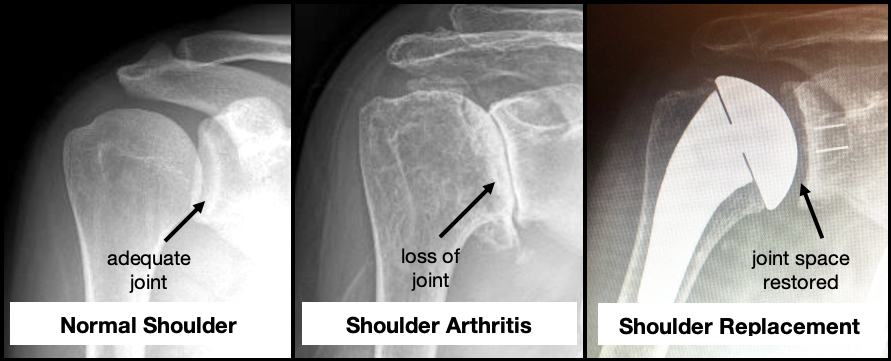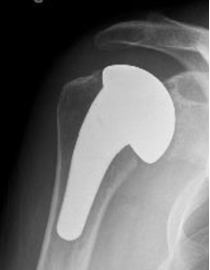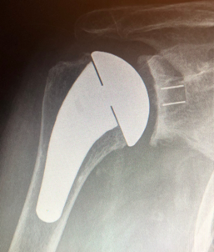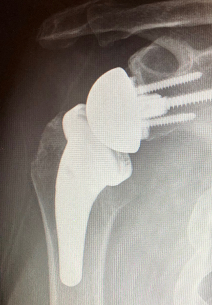Total Shoulder Arthroplasty

What is a shoulder replacement?
A shoulder replacement is when the ball and the socket of the shoulder joint are replaced with metal and plastic components.
Why do people get a shoulder replacement?
The most common reason patients undergo a shoulder replacement is due to shoulder arthritis and pain. Sometimes patients have their shoulders replaced because of fractures or large rotator cuff tears that are not fixable.
Is this a common procedure?
A shoulder replacement is not as common as a hip replacement or a knee replacement but there were 66,000 shoulder replacements done in the US in 2011 with steadily increasing numbers annually. Medical literature has also shown that fellow-ship-trained shoulder and elbow surgeons do more total shoulder replacements with less complications.
What are the restrictions after surgery?
I usually tell my patients that they have a 25lb per arm (50lb with both arms) lifting restriction overhead. Returning to heavy labor jobs or heavy weightlifting at the gym is not encouraged after surgery.
What types of shoulder replacements are there?

Hemiarthroplasty - “Half” Shoulder Replacement
- In a hemiarthroplasty, only the ‘ball’ of the shoulder is replaced; the socket is left alone.
- Younger patients may prefer a hemiarthroplasty (or ‘half’ replacement) as there are no post-op restrictions after surgery regarding weight-limits and activity.
- Pain relief is not as complete as a complete re-placement where both the ball and socket are replaced.

Anatomic Shoulder Replacement
- In an anatomic shoulder replacemenet, both the ball and socket of the joint are replaced.
- The ball is metal and the socket is plastic.
- This replacement provides good pain relief and post-operative function.
- Patients needs to have an intact rotator cuff and not too much bony deformity on their glenoid (the ‘socket’.)

Reverse Shoulder Replacement
- In a reverse shoulder replacement, the ball and socket are switched in their orientation.
- This replacement is good for patients without a rotator cuff or who have substantial bony pathology.
- There is usually some loss of internal rotation (behind your back motion) with this replacement.
- Patients need to have a normal deltoid function.
What is the recovery after surgery?
- Most patients stay in the hospital for one night but this can be adjusted depending on the patient’s needs
- Patients are usually in a sling for 4-6 weeks.
- During this time, gentle passive range of motion exercises are started at home.
- After 4-6 weeks, patients start formal physical therapy at a location of their choice. Physical therapy works on stretching and gaining range of motion first. After range of motion is achieved, gentle strengthening is started.
- After about 4 months you are cleared to progress with activities and strengthen-ing (< 25lbs per arm) as tolerated.
- Strength and range of motion of the shoulder will continue to improve for a year.
How long do these implants last?
Due to the large range of motion of the shoulder, shoulder replacements usually last 10-15 years.
What are the outcomes after surgery?
Most patients have good pain relief after surgery, with the elimination of the deep achy pain associated with arthritic diseases. Patients usually gain function in their shoulder that is better than their pre-operative state although their overall strength may still be less than normal. With relief of pain and improvement in function, patients are able to gain a better quality of life.
Do I have to have a shoulder replacement if I have shoulder arthritis?
Shoulder replacement is only a good idea if the pain and dysfunction in the shoulder is significantly affecting a patient’s quality of life.